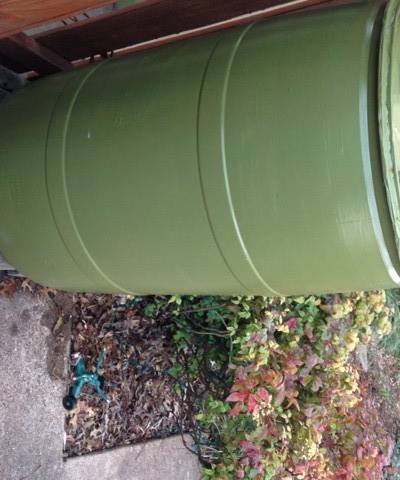Rainwater harvest is the process of diverting, capturing and storing rainwater for future use. Implementing rainwater harvesting is beneficial because it reduces the demand on the water supply, reduces run-off erosion and contamination of surface water. Rainwater can be used for any purpose that requires water.
Last fall, I attended the Texas A&M AgriLife program on building a rain barrel. Although you are “building” your rain barrel, the Texas A&M staff makes the process easy by already cutting holes on top of barrel where the drain spout rests and on the side for the faucet. Even an all-thumbs person like me easily managed to finish the project. The staff circulated around the room to help anyone with questions. The bigger challenge was getting my rain barrel into the back of my Toyota Prius C.
According to the Texas A&M information, you can harvest 660 gallons of rainwater from a 1,000 square foot roof with 1 inch of rain. I installed my rain barrel this spring to capture the rain run-off from my garage; the location is one where I can easily fill up a watering can and water container plants. Since a white rain barrel wasn’t too attractive, I had my rain barrel painted green so it blends easily into the backyard at my house.
If you’re interested in taking about 2.5 hours one evening to hear about benefits of rainwater harvesting and building your rain barrel, email urbanwater@tamu.edu to ask about the next class. I like my barrel so much, I plan to enroll again to build a second one. Even a brief rain shower can easily fill up my rain barrel.
By Sue Hall
West Kessler Neighborhood Association
Beautification Chair
Crime Watch, NOCUPP
Block Captain

